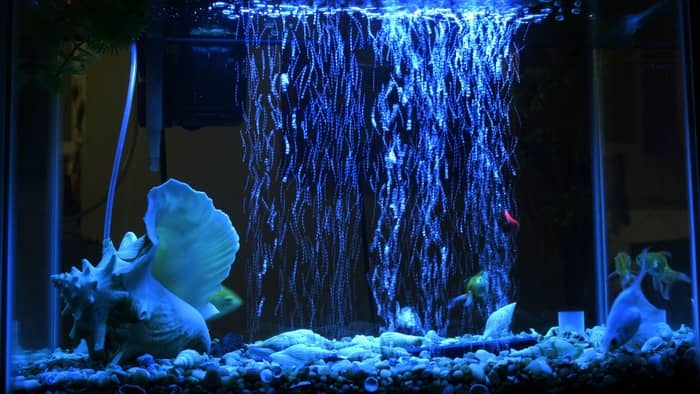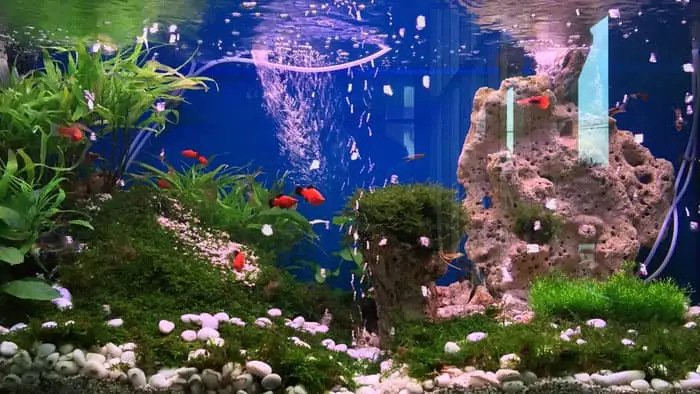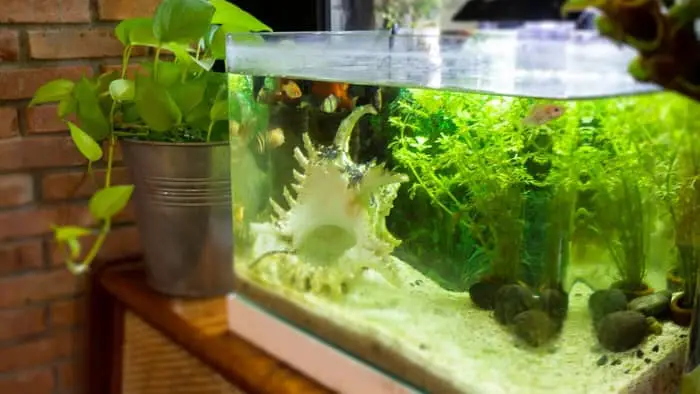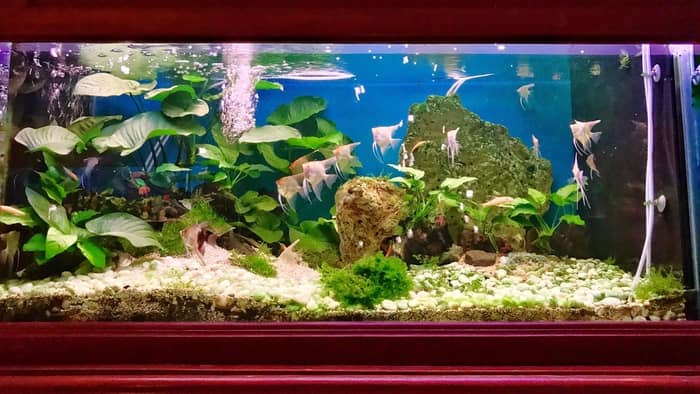Last Updated on May 5, 2022 by admins
Aquarium circulation pump vs powerhead, find out what the main similarities and differences are.
It can be said that aquariums are at least a fulfilling art, which provides hours of amusement. It’s a great way to teach toddlers about the ecosystem, and can also help relieve the stress of everyday life.
Setting up your own aquarium can sometimes be overwhelming, and it takes a lot of effort, planning, and foresight; especially if you are a beginner in this hobby. Therefore, we decided to compare two extremely important parts of aquarium equipment today, the aquarium circulation pump vs powerhead. Well, keep reading.
Aquarium Circulation Pump
Simply put, air circulation pumps are responsible for water circulation in the aquarium. As you can guess, without the circulation of water, there is inconceivable damage, i.e. a lack of sufficient oxygen for the fish or even live plants in the aquarium.
Most aquariums can function quite well without some requirements such as light, but none can survive without water movement. Water circulation has its benefits, increasing oxygen and rinsing any waste in the aquarium tank are just some of them.
It is very important to emphasize that when used as an active part of the aquarium set up it reduces the need for frequent cleaning by moving water and providing the necessary catalyst for the operation of most filters.
Learn more about aquarium circulation pump vs powerhead below.
Aquarium Powerhead
A powerhead resembles a small internal filter but has no filter material in it. However, this electrical device is very useful and even essential for some.
Furthermore, the powerhead creates an underwater current, maintaining the movement of water, and causing the heaters to actually heat all the water. However, that’s not all; it also gives the fish something to swim against. Your aquarium pets will appreciate this feature because it will help them stay active, otherwise, they could spend the rest of their lives wondering how they ended up in a small glass pond. Keep in mind that this doesn’t apply to all types of aquarium pets, but to most it does.
Finally, it is important to emphasize that water flow means that your water will maintain a homogeneous temperature throughout the aquarium tank. Accordingly, there will be no cold and hot spots that often confuse your fish, and can have negative consequences such as illness and death.
Aquarium Circulation Pump Vs Powerhead – Comparison
Read more about the differences and similarities between the two devices below.
Similarities
There is no vital difference between an aquarium circulation pump vs a powerhead. Moreover, both are used for almost identical purposes, to pump water in the aquarium pumps. You can use both devices alternately.
Differences
The Powerhead has balls with a propeller while on the other hand, the circulation pump is what you get in a sump.
Another difference between an aquarium circulation pump vs a powerhead is that the powerhead can be attached to a sponge filter. In contrast, a circulation pump is not made to be connected to anything, it simply sticks to the aquarium wall.
Therewithal, it is necessary to attach some plumbing to a powerhead at the end parts or use it over a sponge filter; the same doesn’t apply to the circulation pump. Namely, it is a simple fan with a propeller that is usually mounted on something like a cage, so it is not necessary to attach any plumbing to make it work.
Finally, one of the main differences between the aquarium circulation pump vs powerhead is in their place of installation. If you want to pump water above your filters, a powerhead is a much more convenient option for this role. On the other hand, if you’re going to pump water at the bottom areas of your tank, a circulating pump is a much better choice for that.
Summary
In short, the powerhead is a jet of water, and the role of the circulating pump is actually to create the effects of waves in the tank, not to cause a direct flow of water. The circulation pump is accordingly used to gain water flow in all places within the tank, and the powerhead will serve much better in areas where you need to cause a stir, i.e. in places where the water is calmer than it should be.
If your tank is larger, feel free to use both of these devices at the same time, one for recirculation purposes and the other in hidden areas. This way you will be sure that they are performing their essential roles in the best possible way. After all, your underwater world needs good circulation to distribute nutrients and oxygen evenly in the water column.
This was a comparison of the aquarium circulation pump vs the powerhead. We hope you found this article useful. If you have any questions, feel free to contact us in the section below.
Take a look at this article as well.
FAQs
Do I Need An Aquarium Circulation Pump?
Circulation pumps can freely be considered one of the essential parts of an aquarium setup. It is there to simulate the natural environment of your pets, such as water current. In addition, the circulating pump washes away any waste and brings food and oxygen as well.
Do I Need An Aquarium Powerhead?
The powerhead is not an essential part of aquarium equipment, but its use is recommended. This device is quite economical, fairly inexpensive, and can be beneficial to the health of your underwater world. It also helps prevent the deposition of detritus and other aquarium substances at the bottom of the tank.
Where Should A Circulation Pump Be Placed?
In short, set it in the same direction as your filter outlet. For example, if your filter is on the right side and points left, you need to place your circulation pump on the right side so that it also points to the left, ie in the same direction as the filter.
Where Should Powerheads Be Placed In Aquarium?
Placing your powerhead is quite simple, you need to place it either at the upper or middle portion of the aquarium. Too low placement is not recommended as this will blow up the substrate.
Do Powerheads Oxygenate Water?
Yes, that is correct. This device provides important water circulation and oxygenation in your aquarium tank.



